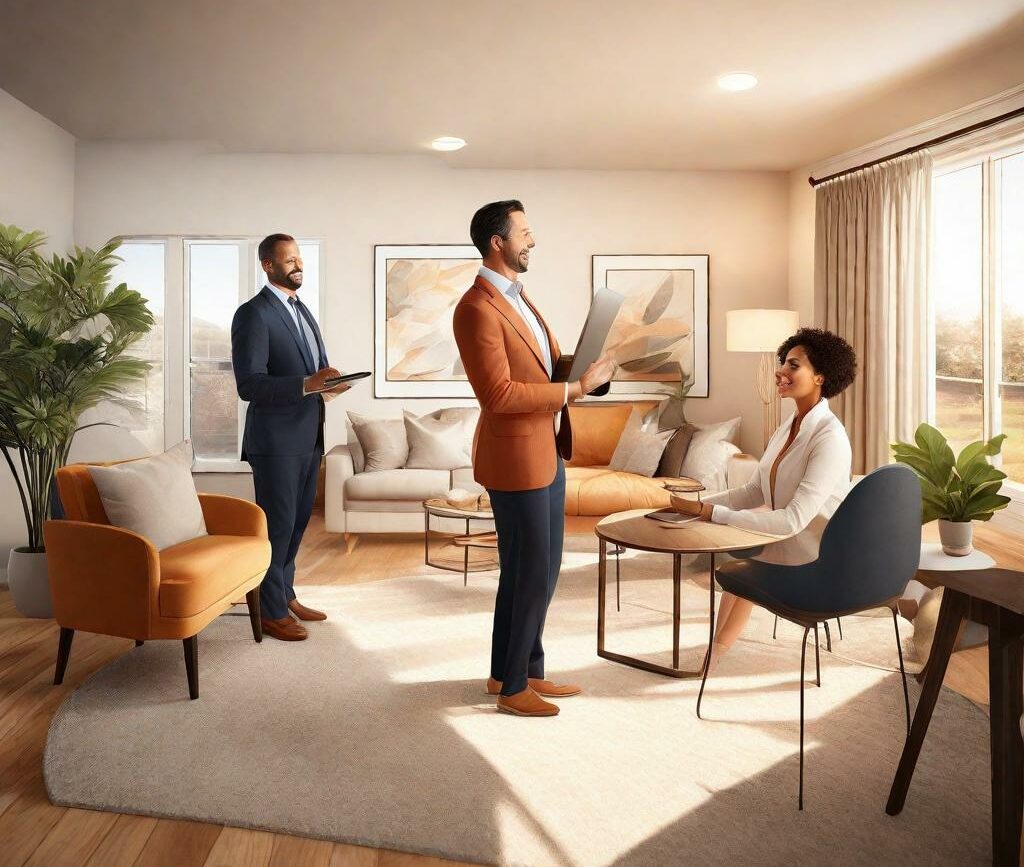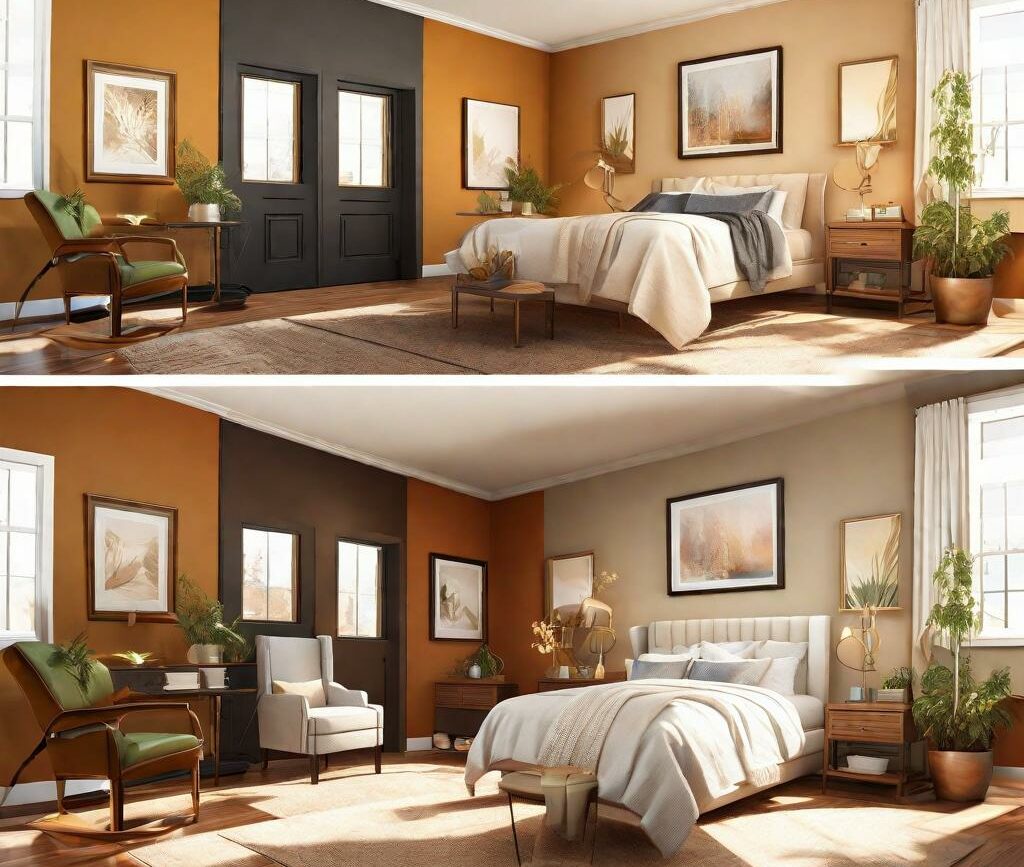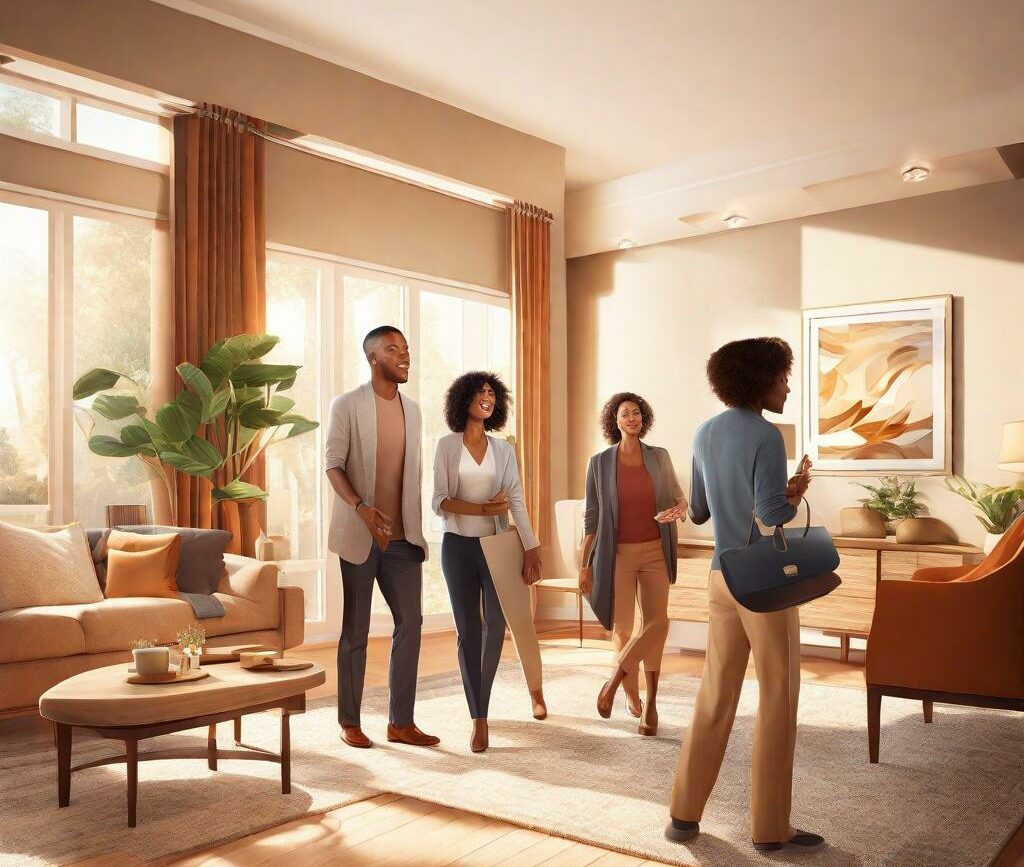The real estate industry has always been on the cusp of technological innovation, constantly adopting new methods to showcase properties in the best light possible. Among the plethora of advancements, virtual staging has emerged as a transformative power, reshaping how properties are presented to potential buyers. Unlike traditional staging, which involves physically decorating a property to make it more appealing, virtual staging uses digital technology to achieve similar, if not superior, results. This comprehensive exploration delves into the intricacies of virtual staging, its benefits, and its evolving role in property marketing, while addressing concerns and limitations inherent to this digital approach.
Understanding Virtual Staging: A New Era in Property Showcasing
Definition of Virtual Staging and Its Basics
Virtual staging is the process of using 3D modeling software and graphic design to digitally adorn an empty or outdated space with furniture, decor, and life. This innovative technique allows real estate professionals to present properties in a more appealing and modern manner, without the physical hassle and expenditure associated with traditional staging methods.
The Evolution: Physical Staging vs. Virtual Staging
While physical staging has its merits, the advent of virtual staging has been a game-changer. Traditional staging demands time, labor, and significant investment in furniture and decorations, which might not always align with potential buyers’ tastes. Virtual staging, on the other hand, offers a customizable, efficient, and cost-effective alternative, providing a tailored viewing experience based on the demographic and psychological profile of prospective buyers.
The Technology Behind Virtual Staging: 3D Modeling and Rendering
At the core of virtual staging is the use of advanced 3D modeling and rendering technology. This allows designers to create hyper-realistic images of properties, complete with aesthetically pleasing interiors that can rival photographs of actual staged spaces. This technology not only showcases a property’s potential but does so in a manner that is both efficient and versatile.
Benefits of Virtual Staging in Today’s Real Estate Market
Cost-Effective Way to Enhance Property Presentations
One of the most significant advantages of virtual staging is its cost-effectiveness. Removing the need for physical furniture and decor reduces not only direct costs but also indirect costs such as storage, transport, and labor. This makes high-quality staging accessible to more sellers, potentially increasing the marketability of their properties.
Expedited Process: Speeding Up the Sales Cycle
Virtual staging can significantly expedite the sales cycle. Traditional staging can take weeks, from planning to execution, whereas virtual stages can be created in a matter of days. This rapid turnaround time means that listings can be marketed much sooner, attracting potential buyers early and reducing the time properties spend on the market.
Deciphering the Homebuyers’ Psychology: Visualizing Potential
Virtual staging taps into homebuyers’ psychology by presenting a property’s potential, enabling them to visualize themselves living in the space. This emotional connection is crucial in converting interest into action. By showcasing various styles and arrangements, virtual staging can cater to a wider range of tastes and preferences, thereby broadening the appeal of the property.
Role of Virtual Staging in Competitive Property Marketing
Standing out in Real Estate Listings: The Visual Edge
In a market flooded with listings, properties staged virtually stand out. High-quality, appealing images capture potential buyers’ attention, making them more likely to engage with the listing. In the competitive online marketplace, first impressions are key, and virtual staging ensures that a property is presented in its best light.
Engaging Potential Buyers: Interactive VR Tours
Beyond static images, virtual staging has evolved to include interactive virtual reality (VR) tours, offering an immersive experience. Prospective buyers can navigate through the staged property at their leisure, exploring different rooms and layouts, further solidifying their interest and emotional investment in the property.
Targeted Staging: Catering to Different Buyer Personas
Virtual staging allows for the customization of decor and furnishings to appeal to specific buyer personas. Whether it’s a young family, a professional couple, or a retiree, staging can be tailored to reflect the lifestyle and preferences of the target demographic, thereby increasing the property’s appeal to those most likely to make a purchase.
Delving Deeper: Concerns and Limitations of Virtual Staging
Understanding the Misuse: Overly-Perfect Presentations
Although virtual staging offers many benefits, it’s not without its pitfalls. There’s a fine line between showcasing a property’s potential and creating overly-perfect, unrealistic presentations. Misuse can lead to disappointments and mistrust, underscoring the importance of using this tool responsibly and ethically.
Fostering Trust: Potential for Misrepresentation
Transparency is paramount in real estate transactions. Virtual staging should enhance, not deceive. It’s critical that virtual enhancements are disclosed and that the property’s actual condition is accurately represented, to foster trust between buyers and sellers.
Other Concerns: IT Infrastructure and Skill Requirements
Implementing virtual staging effectively requires access to robust IT infrastructure and skilled professionals capable of creating realistic and appealing spaces. This can be a barrier for smaller real estate firms or individual agents.
Case Studies: Real-World Success Factors of Virtual Staging
Decoding Successful Virtual Staging: Themes and Styles
Successful virtual staging often involves the use of universally appealing themes and styles, which strike a balance between modern trends and timeless elegance. Analyzing case studies, it becomes evident that spaces staged with a broad audience in mind tend to perform best, attracting a wide array of potential buyers.
Role of Virtual Staging in High-value Property Sales
In the realm of high-value properties, virtual staging proves particularly effective. By showcasing luxury furnishings and decor that complement the property’s architecture and location, virtual staging can significantly enhance the perceived value, attracting affluent buyers looking for exclusive properties.
Consumer Views and Preferences: Insights from Surveys
Insights from consumer surveys underscore the effectiveness of virtual staging. A significant majority of buyers report that virtual staging makes it easier to visualize the property as their future home, which is a crucial step in the decision-making process. Furthermore, listings with virtual staging tend to attract more views and inquiries, indicating a higher level of buyer engagement.
Conclusion: Virtual Staging – A Game Changer in Real Estate Industry

Virtual staging has undeniably revolutionized the real estate industry, offering a versatile, cost-effective, and engaging way to market properties. While it presents certain challenges and requires careful consideration to avoid potential pitfalls, its benefits in terms of cost, efficiency, and marketability are profound. As technology continues to evolve, the role of virtual staging in real estate marketing is set to grow, offering even more innovative ways to showcase properties and engage potential buyers. By embracing this digital revolution, real estate professionals can provide value-added services to their clients, ensuring properties are presented in the best possible light and stand out in a competitive market.
Frequently Asked Questions
How does virtual staging help sell a property faster?
Virtual staging enhances the appeal of a property, enabling potential buyers to visualize its potential as their future home. This emotional connection can speed up decision-making processes, reducing the time a property spends on the market.
What are the steps involved in creating a virtual stage?
The process typically involves photographing the empty or furnished property, designing the interior layout using 3D modeling, and rendering the designs to produce lifelike images of the staged space.
How important is virtual staging in the current real estate market?
In a market increasingly driven by online listings, virtual staging has become an essential tool for engaging potential buyers, making it a critical element in marketing strategies.
Is virtual staging dishonest in marketing a property?
When used responsibly, virtual staging is not dishonest. It should enhance rather than deceive, with the actual condition of the property fully disclosed to potential buyers.
How does virtual staging differ from traditional staging?
Virtual staging uses digital technology to simulate furniture and decor in a property, whereas traditional staging involves physically placing these items in the space. Virtual staging is generally faster and less expensive than traditional staging.
What are the costs involved in virtual staging?
Costs can vary depending on the provider and the complexity of the staging, but virtual staging is typically more affordable than traditional staging, offering a cost-effective solution for enhancing property presentations.







